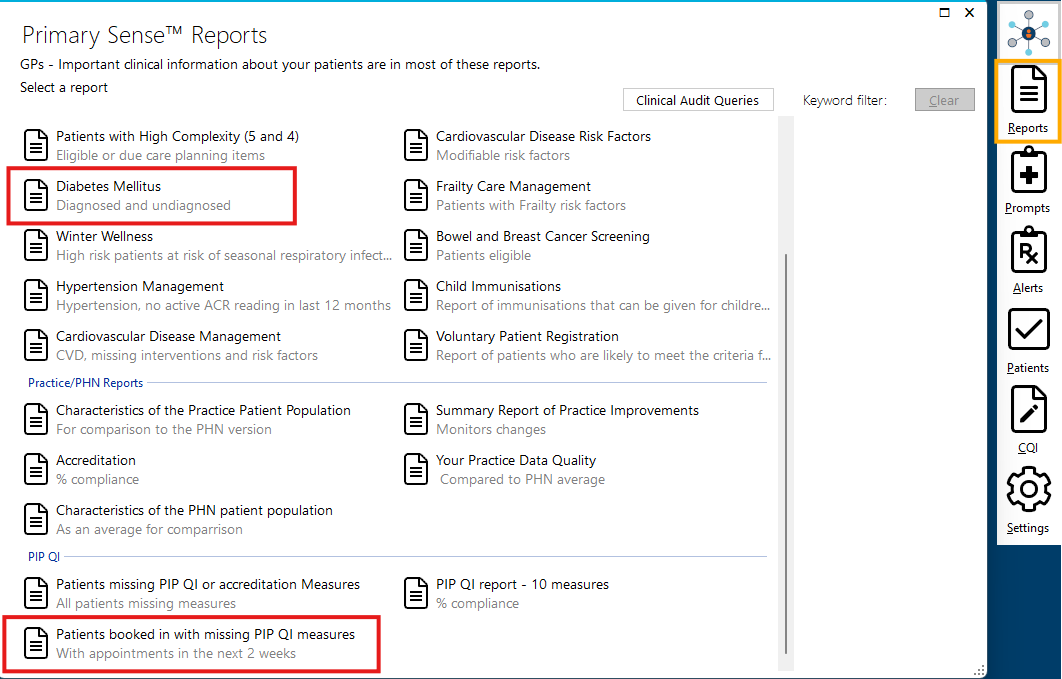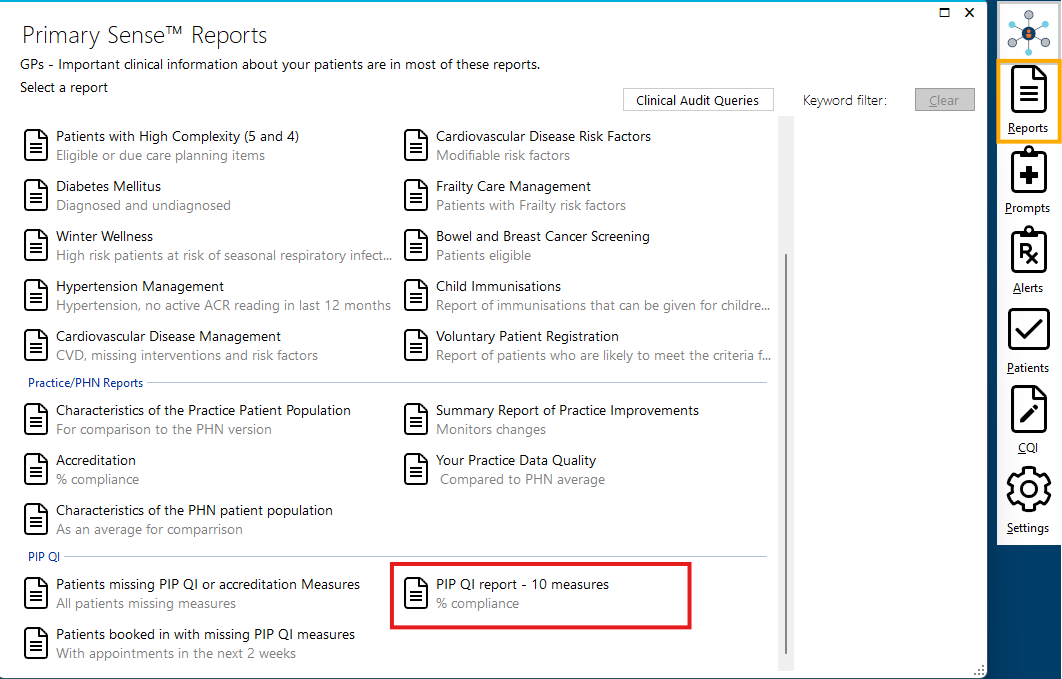Improve recording of blood pressure for patients with diabetes
This quality improvement activity will assist you to identify and recall 15 patients with diabetes who have not had a blood pressure recorded in the last 6 months.
For people with Type 1 or Type 2 diabetes, managing blood pressure can help to ensure appropriate medical care to lower the risk of macrovascular (stroke, heart attack and heart failure) and microvascular (kidney disease, eye disease and peripheral neuropathy) complications [AIHW and RACGP]. By ensuring patients with diabetes have a recent blood pressure result recorded, healthcare teams are better able to understand absolute cardiovascular risk and provide appropriate preventative and management care.
As of January 2025, only 53.6% of patients with diabetes in the Brisbane South PHN region had their blood pressure recorded in the past 6 months.
This activity will focus on improving the recording of blood pressure for patients with diabetes.
QI activity overview
What is the aim of this QI activity
Improve the blood pressure recording rates for our patients with diabetes.
Identify and review 15 patients with diabetes that have not had a blood pressure recorded in the last 6 months.
What will I need to do?
Use Primary Sense reports to identify 15 patients with diabetes that have not had a blood pressure recorded in the last 6 months.
Set-up internal prompts or reminders for patients with diabetes that are missing a recent blood pressure recording.
How will I complete this activity?
Undertake and record a blood pressure reading for 15 patients with diabetes that have not had one completed in the past 6 months.
Where do I document my results?
Diabetes and blood pressure target poster
Optional resource: Model for Improvement and Plan-Do-Study-Act (PDSA) template
Who can I contact for support?
For support with this activity please contact the General Practice Quality Improvement team on Ph. 38647540 or email support@bsphn.org.au
Step 1: Start your activity
Review your procedure for recording blood pressure results for patients with diabetes
Consider your practice team members, who is responsible for the collection and recording of blood pressure for patients with diabetes. Ensure staff have access to current diabetes management guidelines and resources.
Speak with your team to understand your practice’s current process for capturing and recording blood pressure results for patients with diabetes. If needed, develop a procedure for collecting and entering blood pressure results into patient files.
Potential idea:
Update policy and procedure manual with any changes and share with practice team. Display software recording instructions in an accessible place for any person who records blood pressure data, consider the use of a screenshot of a test patient record, if needed. Ensure staff are provided training on the process.
Identify patients with diabetes and no blood pressure recorded in the past 6 months
Using Primary Sense, identify patients with diabetes that have not had a blood pressure recorded in the past 6 months.
Suggested reports are:
Patients booked in with missing PIP QI measures
Column titled “Diabetics with missing factors” can be used to identify patients with diabetes and an appointment in the next 2 weeks missing 1 or more of the diabetes related PIP QI measures:
HbA1c, blood pressure, influenza immunisation
Diabetes Mellitus Report
Scroll to section titled “Patients with diabetes who may be eligible for chronic care occasions of service”. to find two columns titled: “BP date” and “BP result”. Up and down arrow function next to BP date can be used to filter.
Optional: the Primary Sense report can be extracted in for ease of use and saved as an excel file.

Set-up internal prompts and/or reminders for 15 of your patients with diabetes that have been identified as due for a blood pressure recording.
Potential ideas:
Create an internal prompt/reminder in the practice clinical software for patients with appointments coming up in the next two weeks (the Primary Sense reports can assist with this using the existing appointment column in the reports).
Where appropriate, consider the use of practice nurse MBS items for chronic disease monitoring and support of patients with diabetes and an active GP management plan (GPMP).
Review if patient is due a new GP management plan (GPMP) or GPMP review. Recall patient for GPMP/review and include prompt for blood pressure recording as part of appointment.
Document and share your results
Document results of the activity. You can use the tracking posters to record results and display them in the treatment room or lunchroom so that team members can see the impact of their changes. You can also document your results in the QI summary register or MFI/PDSA.
Step 2: Track your results
Suggested measures and data sources
Use the Primary Sense desktop report “PIP QI report – 10 measures’’ to record “QIM10 – Patients with diabetes with a blood pressure result”. The numerator for QIM 10 can be used pre and post activity for comparison of the number of patients with a blood pressure recorded ≤ 6 months before the activity and after the activity.

Manually record the number of patients identified through the QI activity that have since had a blood pressure result recorded during their next appointment.
Step 3: Complete and reflect on your activity
As a team, reflect on how the activity went.
What were the challenges/barriers?
What worked well?
Are there any small changes that you could implement to support routine blood pressure recording for patients with diabetes?
Example of completed QI activity
View the Model for Improvement (MFI) and Plan-Do-Study-Act (PDSA) example of a practice aiming to improve recording rates of blood pressure with patients with diabetes.
Resources to support with your activity
Please find attached all of the tools and resources to support with your activity below.
Tools and resources
Model for improvement/PDSA template
QI summary register
Roles and responsibility – team activity worksheet
RACGP Management of Type 2 diabetes: A handbook for general practice (Pg. 125)
Chronic Conditions Manual: Prevention and Management of Chronic Conditions in Australia (Pg. 304)
Brisbane South HealthPathways (Diabetes pathway)
We appreciate your feedback!
Our Quality Improvement Team works with general practices to provide practical advice and resources to help plan, implement, and review your QI activities. Your feedback helps our team to provide the best possible support for your practice.
Contact General Practice Quality Improvement
Phone: 07 3864 7540





